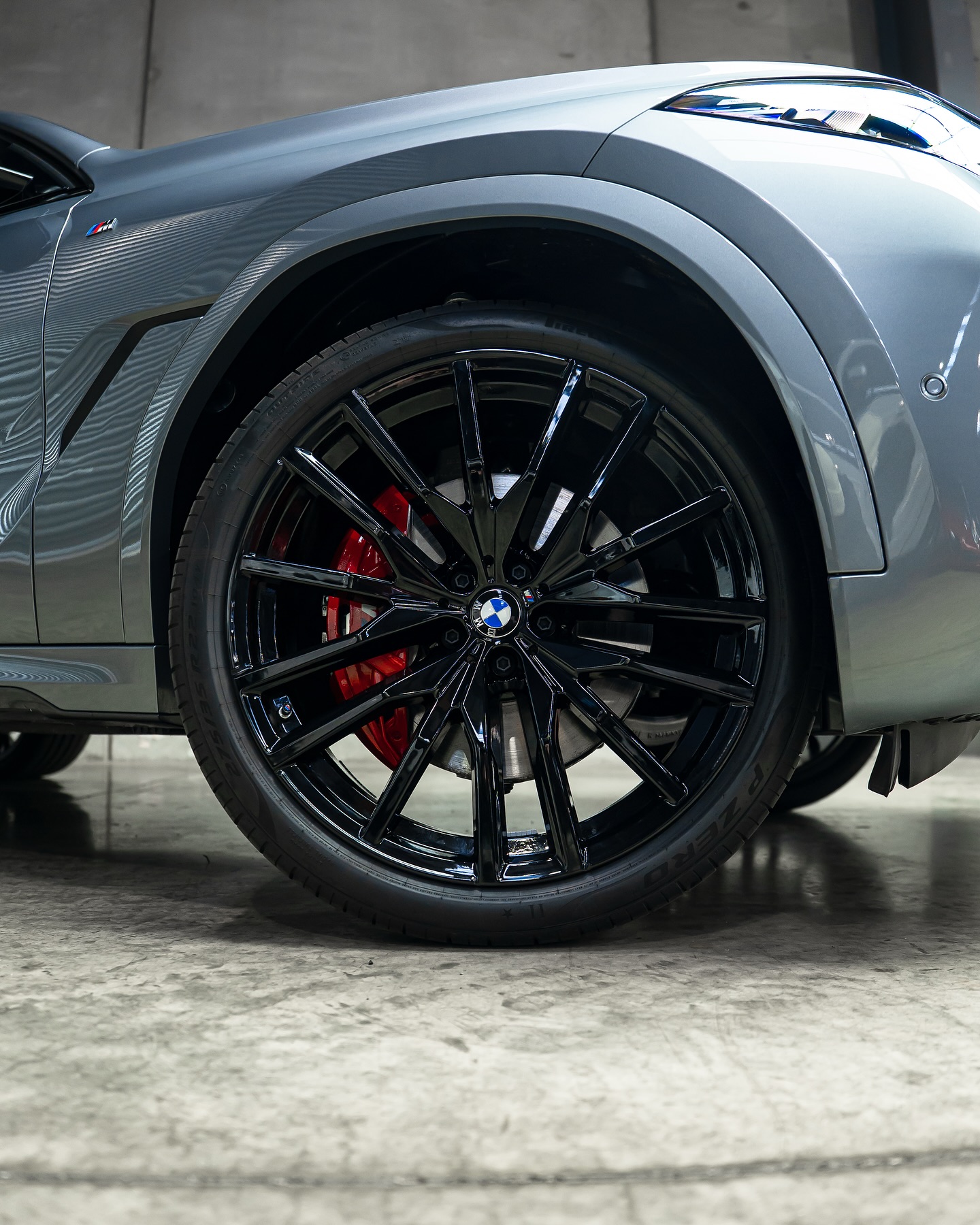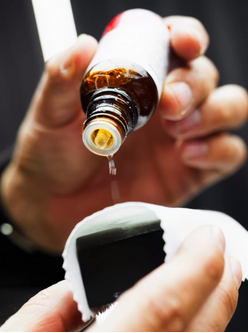The vibrant sheen and deep lustre of a new car’s paint job are often the first things that catch our eye. More than just a cosmetic finish, automotive paint is a sophisticated, multi-layered system engineered to protect the vehicle’s body from the elements while providing aesthetic appeal. At the heart of this protection lies a crucial, yet often misunderstood, component: the clear coat. And simply put...the thicker it is, the better!
The Multi-Layered Marvel: Understanding Automotive Paint
Automotive paint is not a single application but a carefully constructed sandwich of layers, each serving a specific purpose. Typically, it begins with an e-coat (electrocoat primer), a corrosion-resistant layer applied to the bare metal body. This is followed by a primer surfacer, which smooths out imperfections and provides adhesion for the subsequent layers. Next comes the base coat, which contains the pigment and gives the car its color. This layer is usually quite thin and porous. We are talking microns here.
Finally, the star of the show: the clear coat. This transparent, unpigmented layer is applied over the base coat. Its primary function is to provide protection against environmental damage, UV radiation, chemical etching, and minor abrasions, all while enhancing the gloss and depth of the underlying color. Modern clear coats are typically acrylic or urethane-based, formulated with advanced polymers and additives to achieve durability and optical clarity.
The Unsung Hero: What is Clear Coat?
Think of the clear coat as the car's sunscreen and shield. It’s a crucial barrier that absorbs the brunt of daily wear and tear, preventing direct damage to the colored base coat. Its high gloss acts as a mirror, reflecting light and making the color appear richer and more vibrant. Beyond aesthetics, the clear coat is engineered to be chemically resistant to common contaminants like bird droppings, tree sap, and industrial fallout, giving you time to clean them off before they permanently etch the paint. It also offers a degree of scratch resistance, protecting against minor swirls and scuffs that inevitably occur from washing and everyday contact.
The Battle Scars: How Clear Coat is Affected
Despite its robust design, clear coat is not impervious to damage. It constantly faces an onslaught of environmental and mechanical stressors.
- UV Radiation: The sun's ultraviolet rays are a primary enemy. Over time, UV exposure breaks down the chemical bonds within the clear coat, leading to oxidation, fading, and a chalky, dull appearance.
- Environmental Fallout: Acid rain, industrial pollutants, tree sap, bird droppings, and insect remains are all highly corrosive. If left on the surface, their acidic or alkaline nature can etch through the clear coat, leaving permanent marks.
- Abrasive Contaminants: Dust, dirt, and road grit act like sandpaper when wiped across the surface, creating micro-scratches and swirl marks that dull the finish. Improper washing techniques, using abrasive cloths, or automatic car washes with harsh brushes are significant culprits.
- Chemical Exposure: Harsh cleaning products, aggressive degreasers, or strong solvents can strip away the clear coat’s protective properties and even cause it to delaminate.
- Physical Damage: Stone chips, minor collisions, and even keys or rings can directly compromise the clear coat, creating breaches that expose the underlying layers.
The Unraveling: Why Clear Coat Fails
Clear coat failure manifests in several ways, all stemming from a breakdown of its protective integrity.
- Oxidation and Fading: This is the most common form of failure, characterised by a hazy, dull appearance, particularly on horizontal surfaces exposed to direct sunlight. The clear coat essentially "burns" and loses its transparency.
- Peeling and Delamination: In severe cases, the clear coat can lose adhesion to the base coat and begin to peel or flake off, exposing the less durable base coat to the elements. This is often a result of extensive UV damage, improper preparation during painting, or extreme temperature fluctuations.
- Cracking and Hazing: Micro-cracks can develop, leading to a network of fine lines or a generally hazy appearance. This can be due to excessive film thickness, improper curing, or prolonged exposure to harsh chemicals.
- Etching: As mentioned, corrosive contaminants can create visible marks that cannot be buffed out, indicating a breakdown of the clear coat’s structure.
The Thickness Dilemma: Why Manufacturers Don't Invest More
Given the clear coat's vital role, one might wonder why manufacturers don't simply apply a much thicker layer to enhance durability. The answer lies in a complex interplay of factors:
- Cost: Thicker clear coat means more material, longer drying times, and potentially more energy consumption in the curing process. In the high-volume, cost-sensitive automotive industry, even small increases per vehicle can translate into significant expenses across millions of units.
- Application Complexity: Applying a consistently thick and even clear coat across complex body panels can be challenging. Excessively thick layers can be prone to issues like "runs" or "sags," and can also be more susceptible to cracking or delamination due to internal stresses during curing and temperature changes.
- Repairability: While a thicker clear coat might offer more initial protection, it can also be more difficult to repair seamlessly. Blending new clear coat into a significantly thicker existing layer can be challenging, often requiring more extensive repainting.
- Weight: While seemingly minor, every gram added to a vehicle impacts fuel efficiency and emissions. Automakers strive for lightweight designs, and excessive paint thickness works against this goal.
- Optical Clarity: There's a point of diminishing returns with thickness. Beyond a certain point, the added thickness can actually subtly reduce the optical clarity and depth of the finish, making the paint appear less vibrant.
Manufacturers aim for an optimal balance: a clear coat that provides sufficient protection and aesthetic appeal while remaining cost-effective, easy to apply, and repairable.
The Imperative: Protecting Your Investment with a Coating
Understanding the science behind automotive paint and the vulnerabilities of clear coat highlights the crucial need for active protection. While factory clear coats offer a baseline defense, they are not invincible. This is where aftermarket paint protection products, particularly coatings, come into play.
Coatings are liquid polymer solutions that, when applied to a vehicle's paint, cure to form a durable, transparent layer of protection. This layer is significantly harder and more chemical-resistant than the factory clear coat, offering enhanced defense against:
- UV Degradation: Coatings such as Revivify, contain strong UV blockers, significantly reducing the clear coat's exposure to harmful rays.
- Chemical Etching: Their dense, non-porous structure makes them highly resistant to acids, alkalis, and other corrosive contaminants.
- Minor Scratches and Swirls: While not scratch-proof, the increased hardness of a coating provides a sacrificial layer that helps prevent light swirls and scratches from reaching the underlying clear coat, however a minor scratch in a ceramic coating will require a repair, whereas similar damage to a Revivify coating could heal itself. Either way, coatings of any type can be completely breached, so don't think your car has a super power because it has a coating.
- Contaminant Adhesion: The hydrophobic (water-repelling) properties of coatings make it difficult for dirt, grime, and environmental fallout to bond to the surface, making cleaning much easier and less abrasive. Better coatings are more hydrophobic.
In essence, a coating acts as an additional, superior clear coat, significantly extending the life and preserving the aesthetic appeal of your vehicle's paint. Solutions like Revivify, being a premium example of a coating, exemplify this advanced protection. It’s an investment that pays dividends by removing the need for waxing, it makes maintenance simpler, and, most importantly, a coating, like Revivify safeguards the intricate science of your car's factory finish against the relentless forces of nature and daily wear. Protecting your clear coat isn't just about maintaining a shiny car; it's about preserving the integrity and value of your automotive investment.
Related Articles
Check out our archived newsletters to help you stay up-to-date with Revivify Australia.
Subscribe to our newsletter
Join our newsletter to stay up to date on features and releases.









